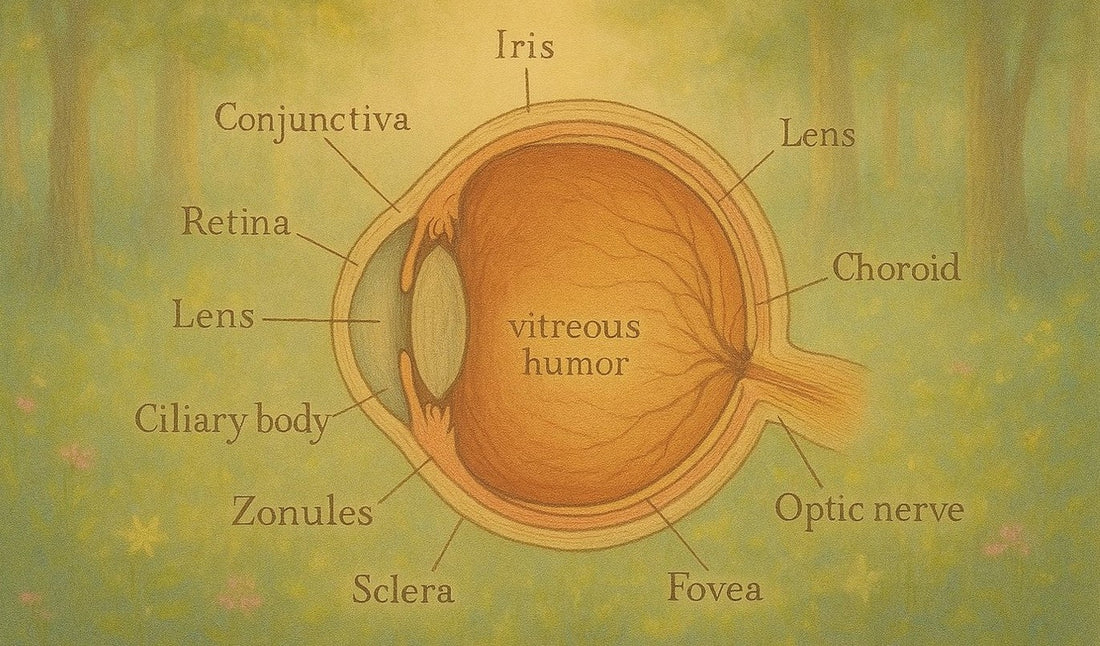
The Anatomy of the Eye
Share
Author: Hayley Martin
A Guide to the Magical Parts that Make Sight Possible
Even though they’re tiny, your child’s eyes are filled with wonder. Each part working together to help her discover, read, imagine, and dance through her day. This guide is here to walk you through the most important parts of the eye, in language designed to be easily understood using the words we use day-to-day (oh… and maybe just a touch of enchantment).
We’ve organized the terms from A to Z because we find that, both multiple terms and multiple children, do best when they line up alphabetically. Like kids on their way to gym class: in alphabetical order by last name, one behind the other, and often with a bit of personality.
Cornea
The clear, protective window at the very front of the eye.
It’s the first to greet the light, curved just right to help guide it inward. Think of the cornea like a crystal dome or the outer shell of a snow globe. It keeps everything safe and sparkly inside.
Extraocular Muscles
The tiny muscles that help the eye move.
They allow your child to look up at the stars, down at her toes, and side to side in a game of hide and seek. These muscles help her do all this with speed, grace, and perfect coordination.
Iris
The colored ring around the pupil.
It’s more than beautiful, it’s a shapeshifter. The iris expands and contracts to control how much light enters the eye. Like a curtain opening and closing on a stage, it adjusts so the scene is never too bright or too dim. Pretty magical, right?
Lens
The clear, flexible structure just behind the pupil.
It changes shape to help your child see things up close or far away. Similar to a camera lens that zooms in and out, it focuses the world. Whether she’s spotting a bird in the sky or reading a page in her lap, the lens is helping her see it all.
Macula
A tiny spot in the very center of the retina.
This is where vision is sharpest. This is where your child sees details like letters, freckles, or the dots on a ladybug. Though small, it holds the richest part of the story.
Optic Nerve
The bridge between the eye and the brain.
Every image the eye sees is carried along this path. The optic nerve is a bundle of over a million tiny fibers and delivers the visual tale to where it becomes understanding, reaction, and memory.
Pupil
The dark circle in the center of the iris.
Think of a doorway where light steps inside. It widens in the dark, shrinks in the sun, and always welcomes in just enough light to bring the world into focus.
Retina
The inner layer at the back of the eye where images begin to form.
This is where light turns into pictures. Like a film in an old-fashioned camera, the retina catches every detail and sends it off to the brain to be understood.
Sclera
The white part of the eye.
It’s the sturdy shell that gives the eye its shape and protects all the delicate workings inside. Think of it like the enchanted walls of a glass castle.
Vitreous Humor
A jelly-like substance that fills the center of the eye.
Imagine the eye as a snow globe, this is the gentle, clear filling inside. It helps the eye keep its round shape and allows light to pass through to the back.
